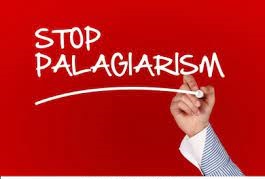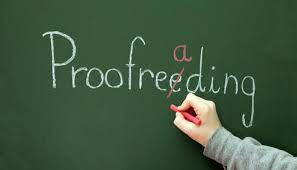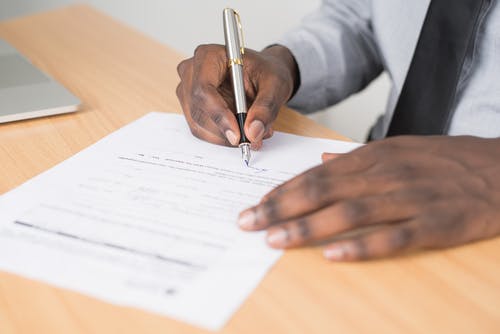Passing the plagiarism check of the thesis
Checking for plagiarism is a mandatory procedure when writing a thesis. In this case, the minimum threshold for text uniqueness should, on average, be seventy-five per cent. Before considering this topic in detail, you still need to try to find out what is plagiarism itself.
What is plagiarism?
 Plagiarism is the deliberate assignment of copyright to an activity. It is also worth noting that in different universities, there are various acceptable indicators in this regard. For some, seventy per cent is acceptable, while others require at least ninety. Therefore, before you start checking your thesis text for anti-plagiarism, you need to determine what regulations your educational institution adheres to on this topic.
Plagiarism is the deliberate assignment of copyright to an activity. It is also worth noting that in different universities, there are various acceptable indicators in this regard. For some, seventy per cent is acceptable, while others require at least ninety. Therefore, before you start checking your thesis text for anti-plagiarism, you need to determine what regulations your educational institution adheres to on this topic.
Even if you write this type of scientific work yourself, it is far from the fact that you will pass the anti-plagiarism test the first time since any quote will be regarded as plagiarism and the title page and the list of literature used in work. If you still fail to pass anti-plagiarism, then your work will not be admitted to protection. In some cases, it is even possible to be expelled from the university.
What can be plagiarism in a graduation project?
As a rule, the following types of plagiarism are the most common:
- Rewriting someone else’s thesis (in some cases, several works);
- Mixing your text with other sources, including quotes.
- Rewriting, i.e., Paraphrasing someone else’s text. This is usually the most challenging part for an anti-plagiarism program to figure out.
How can the uniqueness of the text be increased?
 To answer this question, it is worth first finding out what is hidden under this term. Usually, the uniqueness is called the original text is written by the author of a scientific study, but here everything is not as simple as it might seem at first, but we will talk about this a little later.
To answer this question, it is worth first finding out what is hidden under this term. Usually, the uniqueness is called the original text is written by the author of a scientific study, but here everything is not as simple as it might seem at first, but we will talk about this a little later.
To increase the uniqueness, it is worth using quotes from famous people, but they must be written strictly in quotation marks. Also, the use of quotations in the thesis has its limit. Also, the authorship must be indicated. If you do not correctly format the quote inserted into the text, it will be considered copying.
Besides, you can do more of the central part of the work or add extended output so that your unique text can overlap those fragments that are not unique.
But since anti-plagiarism is just a program, it will not be challenging to outwit it. The only thing is that you have to change the source as much as possible.
Various tricks when using the anti-plagiarism program
- The easiest way is to replace non-unique parts of the text with synonyms. Besides, you can change the case endings. Such methods of text replacement sometimes increase the uniqueness literally at times.
- It is also possible to use a change in the order of words in a sentence, but this must be done so that the original meaning inherent in this fragment of the text is still preserved. Also, it is worth considering that some programs can recognize such a trick.
- There is also such a way: you dilute the non-unique parts of the proposal with the unique ones while complementing the former.
- You can change not only words but also individual characters. Some numbers can be written in words and vice versa. The per cent icon can be adjusted to the word itself, etc.
Perhaps, the above methods are already well known to many students, but not everyone can use them because some people will not allow their conscience to do something like that. A kind of way out in this situation can be a thesis written to order. However, this method is also not entirely honest.
Many different network agencies are ready to provide services of this kind, but even they cannot guarantee one hundred per cent uniqueness of the text. Sometimes a rather unpleasant situation happens: a person orders a job, gets it, pays for it, starts checking for plagiarism, and here it turns out that the percentage of text uniqueness is relatively low, but there is no time to redo it, and a specialist who took the money to bring the identity of the work to the required level flatly refuses without additional payment.
To prevent this from happening to you, you should first ask the performer for a ready-made version of the work, check it yourself on a unique program and only after that pay money if the uniqueness of the text meets the specified standard.
In conclusion, I would like to say that checking the thesis for anti-plagiarism is a rather strict procedure, so you need to take it with full responsibility. Remember that by improving your work in every possible way, you get an additional chance to get a good mark on the defence of the thesis project.
Do you need a similar assignment done for you from scratch? We have qualified writers to help you. We assure you an A+ quality paper that is free from plagiarism. Order now for an Amazing Discount!
Use Discount Code "Newclient" for a 15% Discount!
NB: We do not resell papers. Upon ordering, we do an original paper exclusively for you.


 When working with scientific texts, it is essential to eliminate deficiencies, such as stylistic or grammatical errors. Many authors do not know how to carry out proofreading to avoid all sorts of typos correctly.
When working with scientific texts, it is essential to eliminate deficiencies, such as stylistic or grammatical errors. Many authors do not know how to carry out proofreading to avoid all sorts of typos correctly. In conclusion, a
In conclusion, a  On finding a good essay topic to write on, your field of study decides how a course is administered. If you are reading Biology, for instance, odds are you need to do lab tests, which suggests that some measure of your course time is spent in a Biology lab. Also, Computer Science students may invest a great deal of energy in a PC lab writing code in anticipation of classes or consummation of assignments.
On finding a good essay topic to write on, your field of study decides how a course is administered. If you are reading Biology, for instance, odds are you need to do lab tests, which suggests that some measure of your course time is spent in a Biology lab. Also, Computer Science students may invest a great deal of energy in a PC lab writing code in anticipation of classes or consummation of assignments. This one appears to be somewhat odd as the title should shape the essay’s body’s guide. Notwithstanding, it is entirely conceivable to utilize the proposed content to create the title. To start with, center around the necessities that the assignments have set up. Second, after you comprehend the prerequisites, record three sentences that address focuses that you can explain for your essay’s body. At long last, select a title that catches what the sentences are saying by and large.
This one appears to be somewhat odd as the title should shape the essay’s body’s guide. Notwithstanding, it is entirely conceivable to utilize the proposed content to create the title. To start with, center around the necessities that the assignments have set up. Second, after you comprehend the prerequisites, record three sentences that address focuses that you can explain for your essay’s body. At long last, select a title that catches what the sentences are saying by and large. This is how the number of individuals aces their particular disciplines. Always remember that in case you’re picking up something that isn’t new, somebody is more terrific at it than you are. This isn’t a reality for you to be embarrassed about as it demonstrates a chance for learning. Utilizing strategies from proficient essays is an extraordinary method to improve your essay writing abilities. If you’d prefer to get proficient essays, you should be set up to do a bit of expenditure.
This is how the number of individuals aces their particular disciplines. Always remember that in case you’re picking up something that isn’t new, somebody is more terrific at it than you are. This isn’t a reality for you to be embarrassed about as it demonstrates a chance for learning. Utilizing strategies from proficient essays is an extraordinary method to improve your essay writing abilities. If you’d prefer to get proficient essays, you should be set up to do a bit of expenditure. Is it true that you are neck-profound with many nursing assignments and need help with your projects? You can dispose of your assignment’s misfortunes by hiring our specialists. We have a group of writers who are specialists in nursing to write your assignments. Our guaranteed and qualified nursing assignments help writers will make the assignments. This is per the prerequisites given by the students. Besides, meeting the university citation styles and rules. We deliver the work inside the specified time and without settling on the nature of yield. In many colleges, there is a high level of dropout rates in nursing. For many reasons, the assignment is one of the critical purposes behind the dropout rate’s increment. Students fail since they couldn’t present the assignment on time to their professors. We are offering nursing assignment help services to the students seeking after nursing.
Is it true that you are neck-profound with many nursing assignments and need help with your projects? You can dispose of your assignment’s misfortunes by hiring our specialists. We have a group of writers who are specialists in nursing to write your assignments. Our guaranteed and qualified nursing assignments help writers will make the assignments. This is per the prerequisites given by the students. Besides, meeting the university citation styles and rules. We deliver the work inside the specified time and without settling on the nature of yield. In many colleges, there is a high level of dropout rates in nursing. For many reasons, the assignment is one of the critical purposes behind the dropout rate’s increment. Students fail since they couldn’t present the assignment on time to their professors. We are offering nursing assignment help services to the students seeking after nursing. Nursing is a calling that most females prefer. Be that as it may, many guys are taking up this profile to deal with the patients. Nurses take consideration of patients until they are recovering from the health issues.
Nursing is a calling that most females prefer. Be that as it may, many guys are taking up this profile to deal with the patients. Nurses take consideration of patients until they are recovering from the health issues. Avoid leaving it until the last minute. While cramming works for some students, this is not the best approach for studying for an exam. First, it is important to set up a
Avoid leaving it until the last minute. While cramming works for some students, this is not the best approach for studying for an exam. First, it is important to set up a  Challenge yourself on learning past papers
Challenge yourself on learning past papers In recent times, students are discovering a wholesome number of methods of taking up essay assignments. The most recent and more prevalent is the need to show other people the writing skills one possesses. Furthermore, students must write a few
In recent times, students are discovering a wholesome number of methods of taking up essay assignments. The most recent and more prevalent is the need to show other people the writing skills one possesses. Furthermore, students must write a few  For beginners, selecting from a
For beginners, selecting from a  A book review offers the summary of a book and serves as a critic of the same. Besides, it offers the opinions of the author. It also provides the reader with a judgment of the author’s work. A book review should analyze how the book tried to achieve its purpose and describe what is on the page. Writing book reviews aim to allow students to present their own opinion regarding the author’s concepts in the passage. Furthermore, being able to
A book review offers the summary of a book and serves as a critic of the same. Besides, it offers the opinions of the author. It also provides the reader with a judgment of the author’s work. A book review should analyze how the book tried to achieve its purpose and describe what is on the page. Writing book reviews aim to allow students to present their own opinion regarding the author’s concepts in the passage. Furthermore, being able to 
